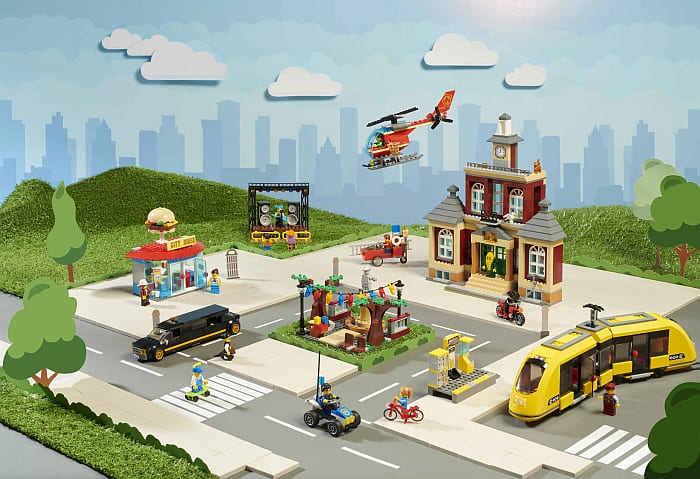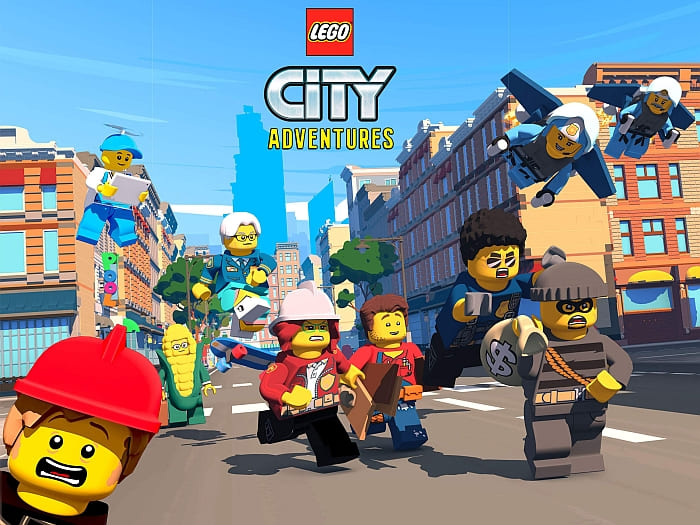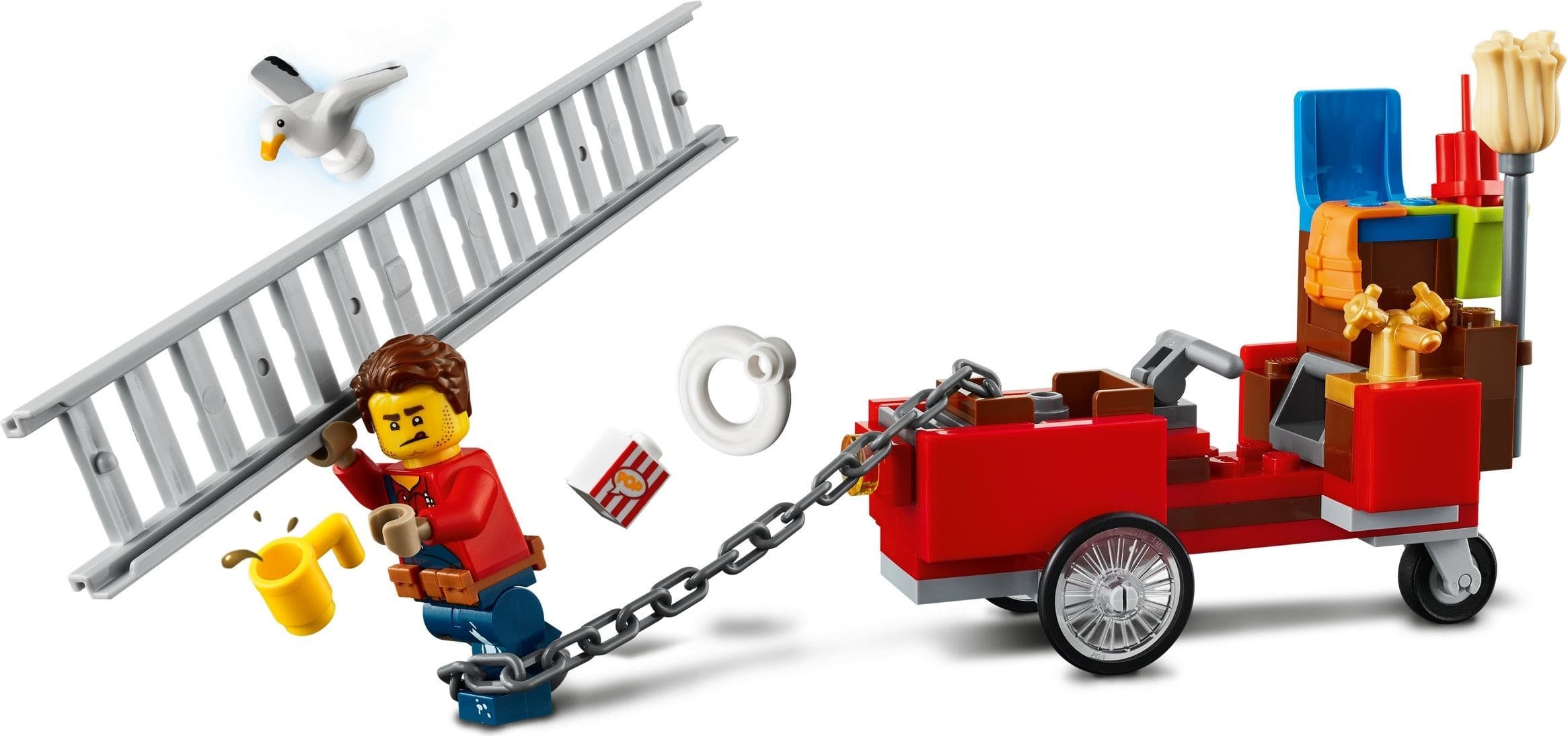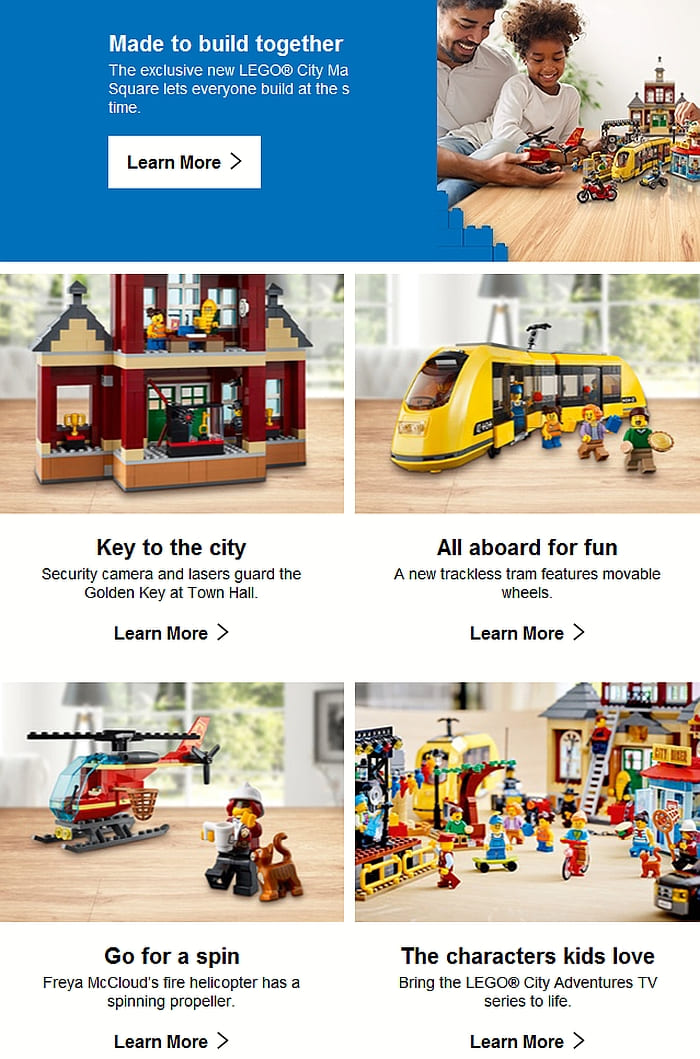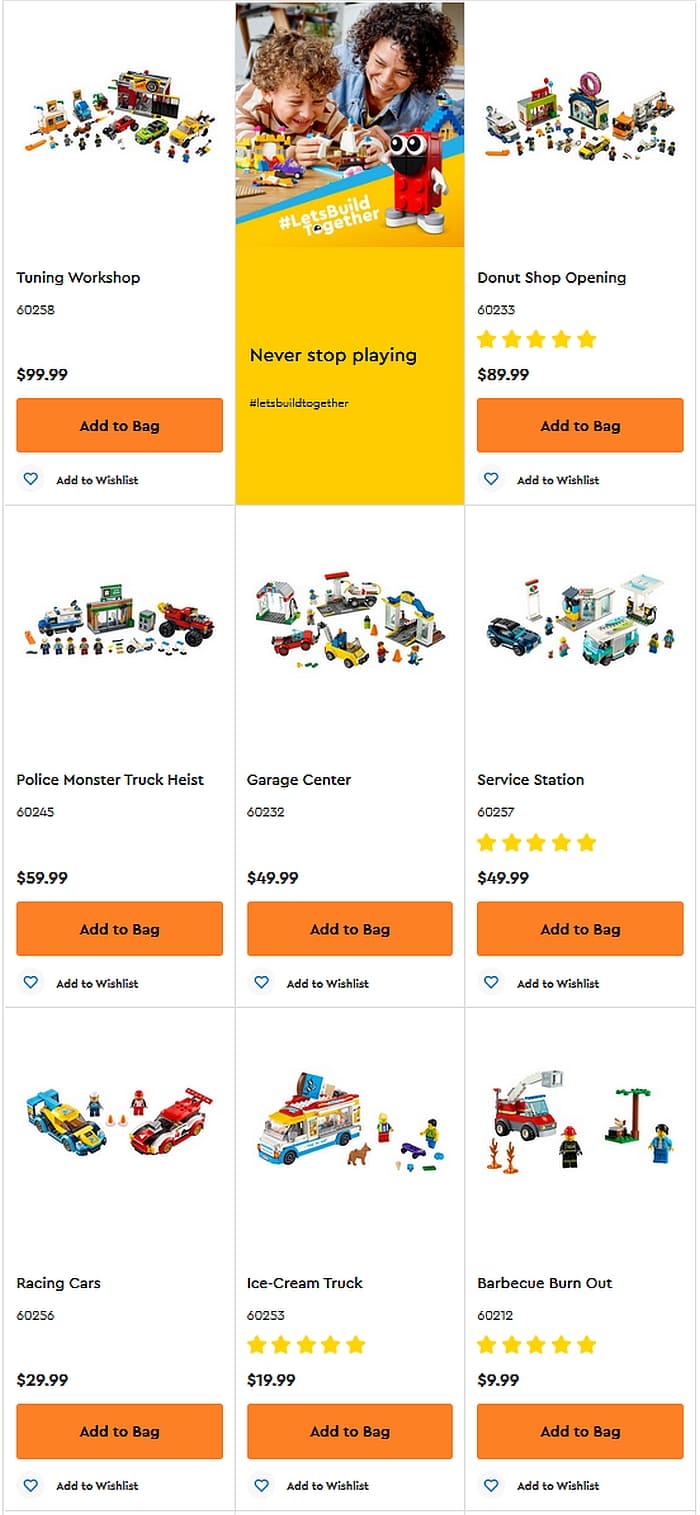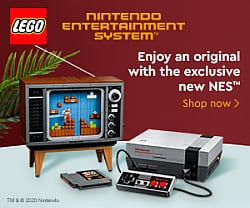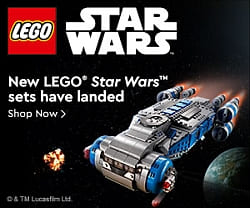There is so much buzz about the recently released #75978 LEGO Harry Potter Diagon Alley set, it’s time that we take a closer look. Because of the sheer size, subject, design details, and piece-selection of this set, it doesn’t just attract Harry Potter fans, but also LEGO city builders, fans of the LEGO Modular Buildings, or those who are looking for a large selection of useful parts and colors. As this is a very large set, we will break up this review into several parts. Today, we will mainly focus on what’s in the box, including instructions, stickers, parts, minifigs, rarities, and more. In future sections, we will talk about each structure, interesting building techniques, display options, compatibility with the LEGO Modular Buildings, and more. So let’s dive right in!

First of all, just to recap some of the basic stats, the #75978 LEGO Harry Potter Diagon Alley is the second largest LEGO Harry Potter set in terms of piece-count (5,544 pieces) after the #71043 LEGO Harry Potter Hogwarts Castle released two years ago (6,020 pieces). It is also the fourth largest LEGO set to date based on the number of pieces, and the second time LEGO released a set based on the famous Wizarding World shopping district (the first one was the #10217 LEGO Harry Potter Diagon alley set from 2011). Diagon Alley is laid out on four 16×32 stud baseplates, and measures over 11” (29cm) high, 40” (102cm) wide, and 5” (13cm) deep. According to the press-release and the box art, fourteen minifigs are included with the set, but there is also a surprise extra minifig that you don’t discover until after you open the box.

LEGO DIAGON ALLEY – WHAT’S IN THE BOX
As it’s common with large LEGO sets, the outer box contains a plain white inner box to separate out half of the bags containing the pieces and give the outer box better structural balance. The inner bags are numbered 1-20. You also get four instruction booklets (one for each structure), four 16×32 stud dark-gray baseplates, an extra unnumbered bag of large plates (used for the floors and roofs), four sticker-sheets, and a small surprise box.

As far as the box art, I’m not particularly impressed with it. Many of the images appear too dark, and they don’t display the set at its best angles. It also doesn’t convey very well the magic of Diagon Alley. I sometimes keep boxes because of their artwork. This isn’t going to be one of them.
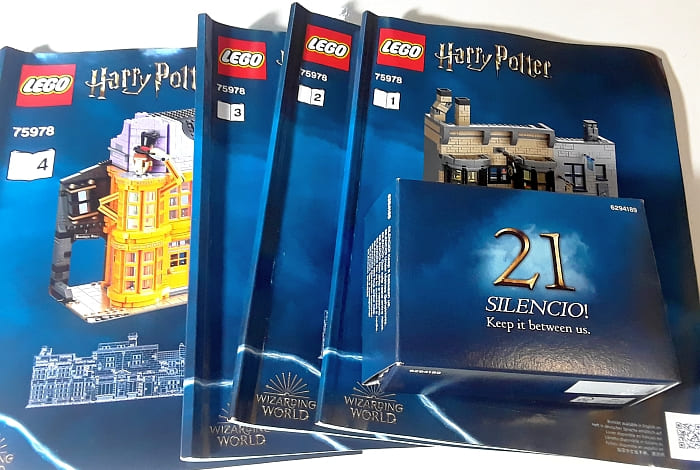
The surprise box contains Hagrid and an unadvertised version of Harry dresses as he first visited Diagon Alley with Hagrid. It’s interesting that Hagrid is counted as one of the 14 minifigs, but not Harry. The box also contains pieces to build a small stand with a silver printed plaque that says, “Welcome, Harry, to Diagon Alley!” I like this extra box. It makes the set even more magical and gives it a luxury feeling.
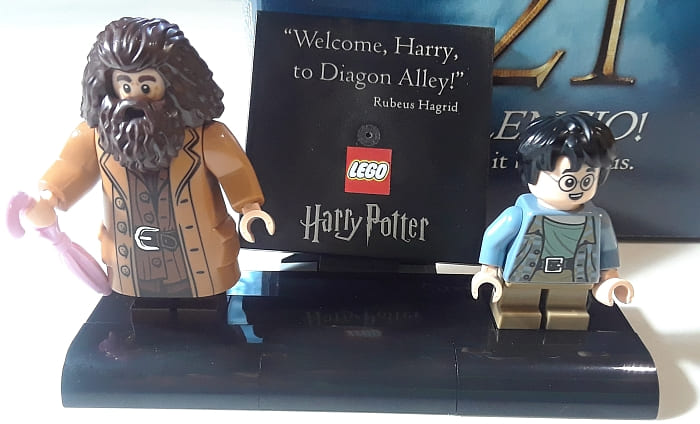
LEGO DIAGON ALLEY – THE INSTRUCTIONS
As mentioned above, you get four instruction booklets. The first one is 151 pages and contains instructions for Ollivanders Wand Shop and the Scribbulus stationary shop. The second instruction book is 143 pages and helps you build the Quality Quidditch Supplies store and the headquarters of the Daily Prophet paper. It also includes the parts-list for the entire set. The third instruction book is 171 pages and features Florean Fortescue’s Ice Cream Parlor and the Flourish & Blotts bookstore. The fourth instruction book is 227 pages with instructions for Knockturn Alley and the Weasley’s Wizard Wheezes joke shop, instructions for the small stand with Hagrid and Harry, the list of the minifigs, and a few quotes from LEGO Design Manager Marcos Bessa and LEGO Graphic Designer Djordje Djordjevic.
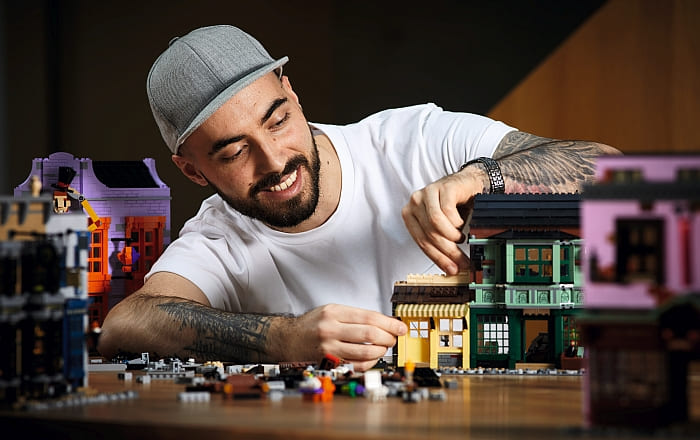
I like how each instruction book shows a blueprint of the whole layout with a colored image of the featured structure, and I also like that there are four instructions, so several people could build at the same time. What I’m disappointed about is that there are no reference images the designers used for any of the buildings. Usually, when a large LEGO set is based on a real structure or something related to an IP, reference images are included in the instruction book. They are always interesting to read about and look at to see how LEGO designers handled some of the features. Unfortunately, they are completely missing from this set. There is not a single image from the films, or from the locations used to shoot the films, or even from Diagon Alley at Universal Studios Florida (which appears to be an inspiration for at least some of the features in the set).

LEGO DIAGON ALLEY – STICKERS & PRINTED PIECES
You get four sticker sheets with the set, one for each structure. Sticker Sheet A has 19 stickers for Ollivanders and Scribbulus. Sticker Sheet B is larger with 16 stickers for Quality Quidditch Supplies and the Daily Prophet. Sticker Sheet C is also small with 16 stickers for the ice cream shop and the bookstore, and the largest is Sticker Sheet D with 60 stickers for the Weasley brothers’ joke shop and for Knockturn Alley.

If you’re a Harry Potter fan and plan to build and display the set as is, the stickers add nice details and references to the books and films. If you are going to add the structures to your city as general buildings, the stickers aren’t really necessary as the buildings are nicely detailed enough as they are. You might not use the stickers at all, or you can use them selectively based on what works best for your layout.
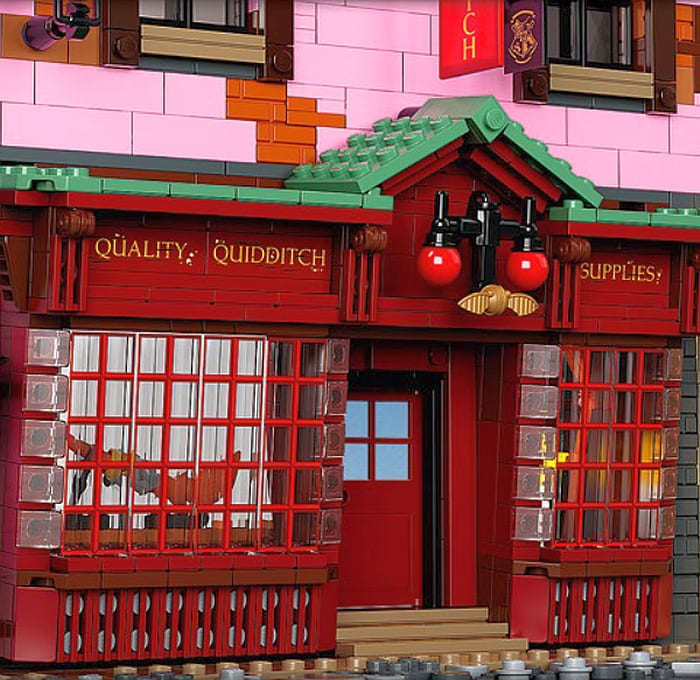
There are also some nice printed pieces in the set that I was very happy to find. The large display windows in Quality Quidditch Supplies are printed 1x2x5 clear bricks (you get six of them), and the display windows in the bookshop are printed 1x4x5 clear bricks (you get two). The lines are nice and straight and printed sharply. No issues at all.
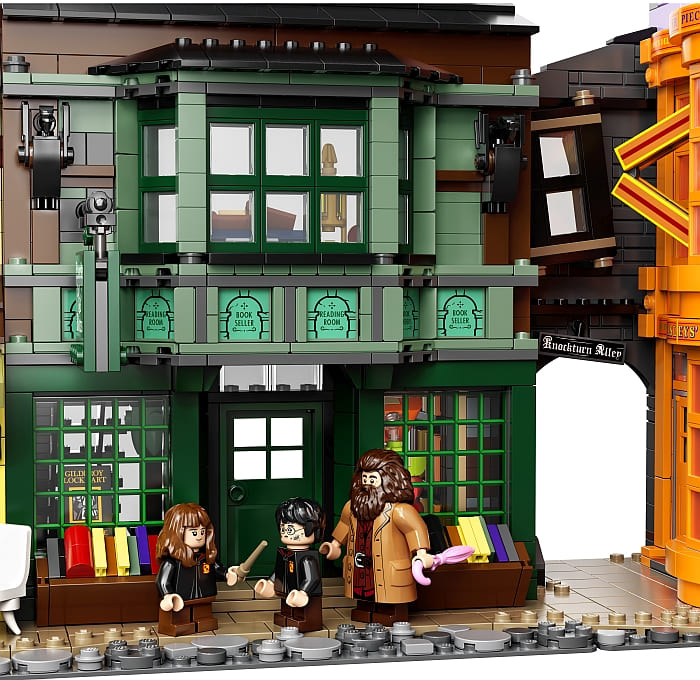
A couple of other noteworthy decorated parts are the tan printed window panes used to imitate newspaper-covered broken windows on the pink building. This is not a new piece as it also appeared in the #75810 LEGO Stranger Things The Upside Down set, but it’s very useful (you get 4). And the newspapers on 2×2 tan tiles are also printed (you get 6). And I already noted the printed plaque in the extra stand that comes with the set.
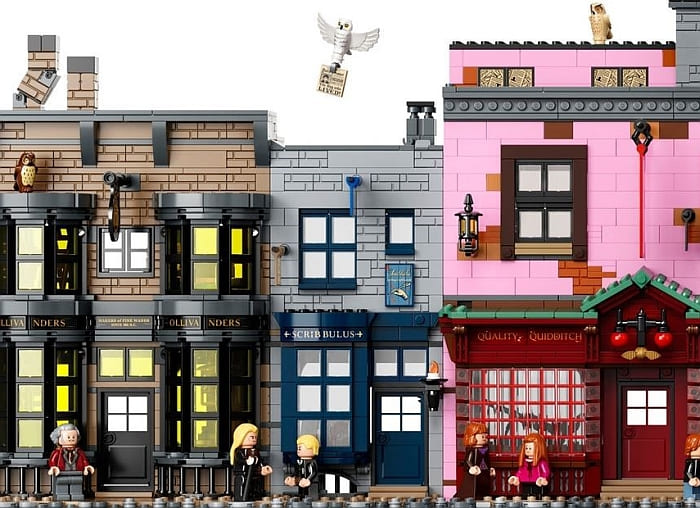
LEGO DIAGON ALLEY – UNIQUE & RARE PIECES
There are so many unique and rare pieces in this set, I don’t even know where to start. There is one brand new piece that’s made specifically for this set; a little case for the wands. It’s a 1x3x2/3 rectangle, and you can place a 1×3 tile on top to make it exactly one brick tall. You get 10 of them in dark-brown.

You get wands in several colors (white, black, dark-orange, dark-tan), which are useful not just for wizards but for greebling. This is the first time the sculpted skull piece appears in plain white. The 2×4 oval tile in tan used as a sign in the Quidditch shop is a new piece, although I don’t think it’s exclusive to this set. You get 5 black lipsticks, which are used as building elements rather than a minifig accessory. They are super useful for greebling and as a short rod connector. The small dragonhead that was originally used as a sword hilt is available in black in this set for the first time (you get two). There are three black and three gold lanterns (not new, but always nice to have).
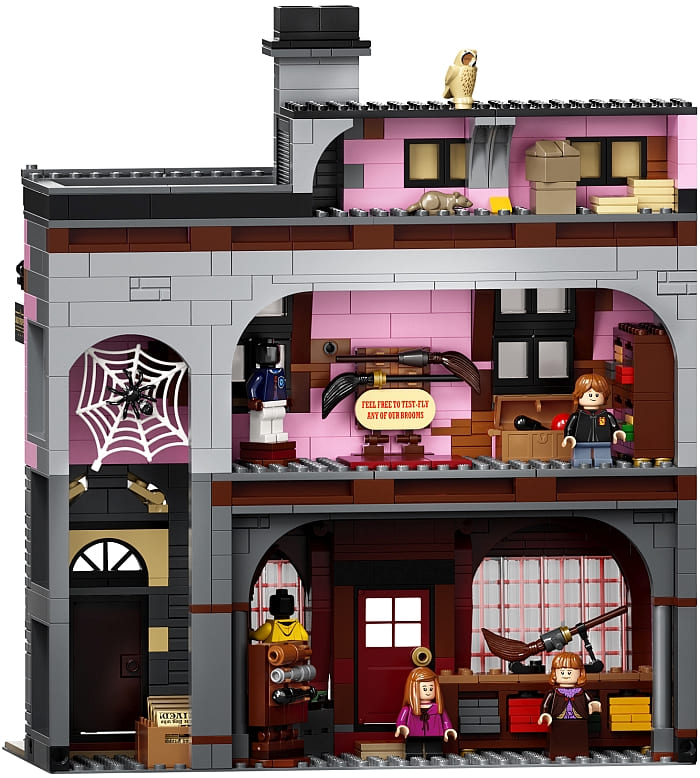
And of course, you get tons of elements for the buildings. Window frames in white, tan, black, orange, dark-blue, and dark-green. Doors in black, orange, light-yellow, dark-blue, dark-green, dark-red, and dark brown. You also get 98 clear window panes, 32 trans-yellow window panes, and 8 trans-black window panes. Masonry bricks are included in tan, dark-tan, light-gray, dark-gray, and lavender (some are 1x2s and some are 1x4s). Standard bricks and plates are also included in large quantities in many useful colors.

We also can’t forget about the three owls (one with open wing and two with closed wings). They are not exclusive but are quite beautiful and rare.
LEGO DIAGON ALLEY – THE MINIFIGURES
The fourteen minifigs are Harry, Ron, Hermione, Draco, Ginny, Molly Weasley, Ollivander, Fred and George, Gilderoy Lockhart, Lucius Malfoy, Hagrid, Florean Fortescue, and the Daily Prophet photographer. And as I mentioned above, there is also an extra version of Harry.
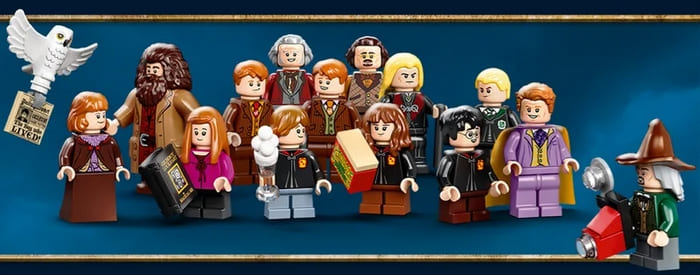
I have been hearing from Harry Potter fans that they are not particularly impressed with the minifig selection. Also, that they would have preferred the movable short legs instead of the fixed ones. I agree about the legs, but other than that, I’m delighted by all the really nice clothing prints (especially all the three-piece suits!) that could be used in many other settings.
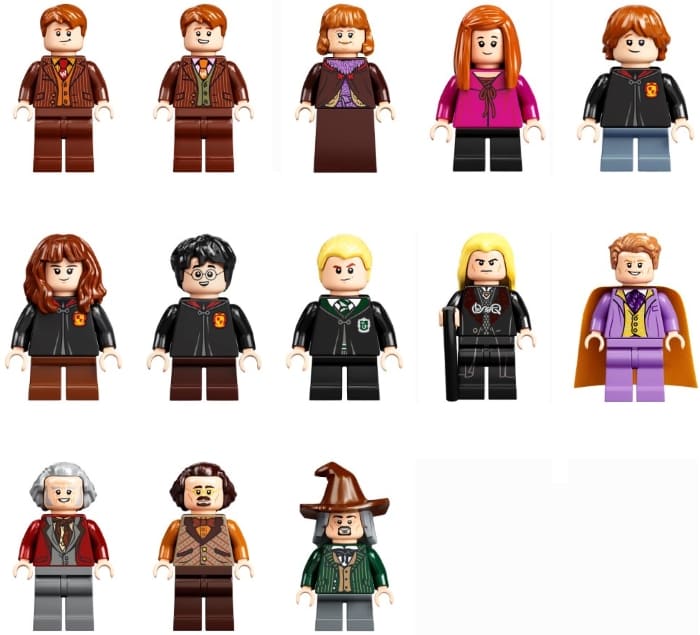
It’s also worth noting that there are two other minifigs in the set used as mannequins in the Quidditch shop. Their heads are blank, but their torsos are nicely printed and could be used for extra characters.

As this article is already getting long, I will finish here for today. Next time, we will continue by looking at each structure. If you would like to hear my final conclusion and don’t want to wait, I would say that although the set has plusses and minuses, I have been immensely enjoying the building experience over the past several days. I’m not a deeply devoted Harry Potter fan, and I mostly look at the set from the perspective of modifying/repurposing the buildings and/or reusing the parts, and from that angle, this set is a treasure chest. If you would like to get it yourself, it’s available at the LEGO Harry Potter section of the Online LEGO Shop.

What do you think? How do you like the LEGO Diagon Alley set so far? Are you planning to get it? Or do you have it already? Feel free to share your thoughts and own reviews in the comment section below!
And you might also like to check out the following related posts:



